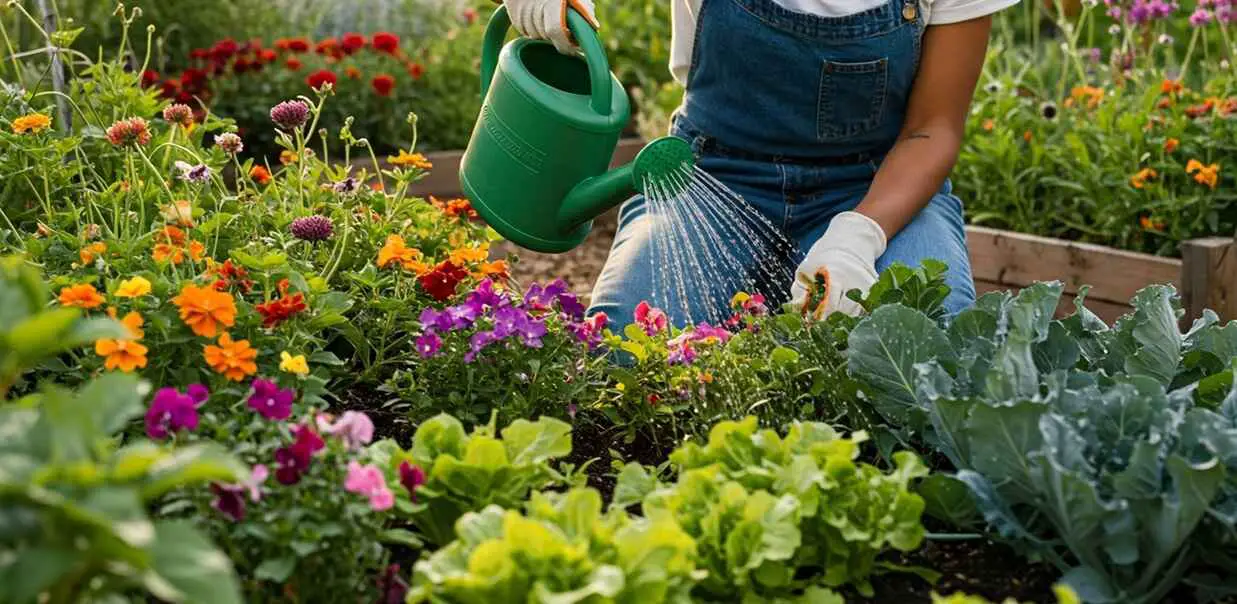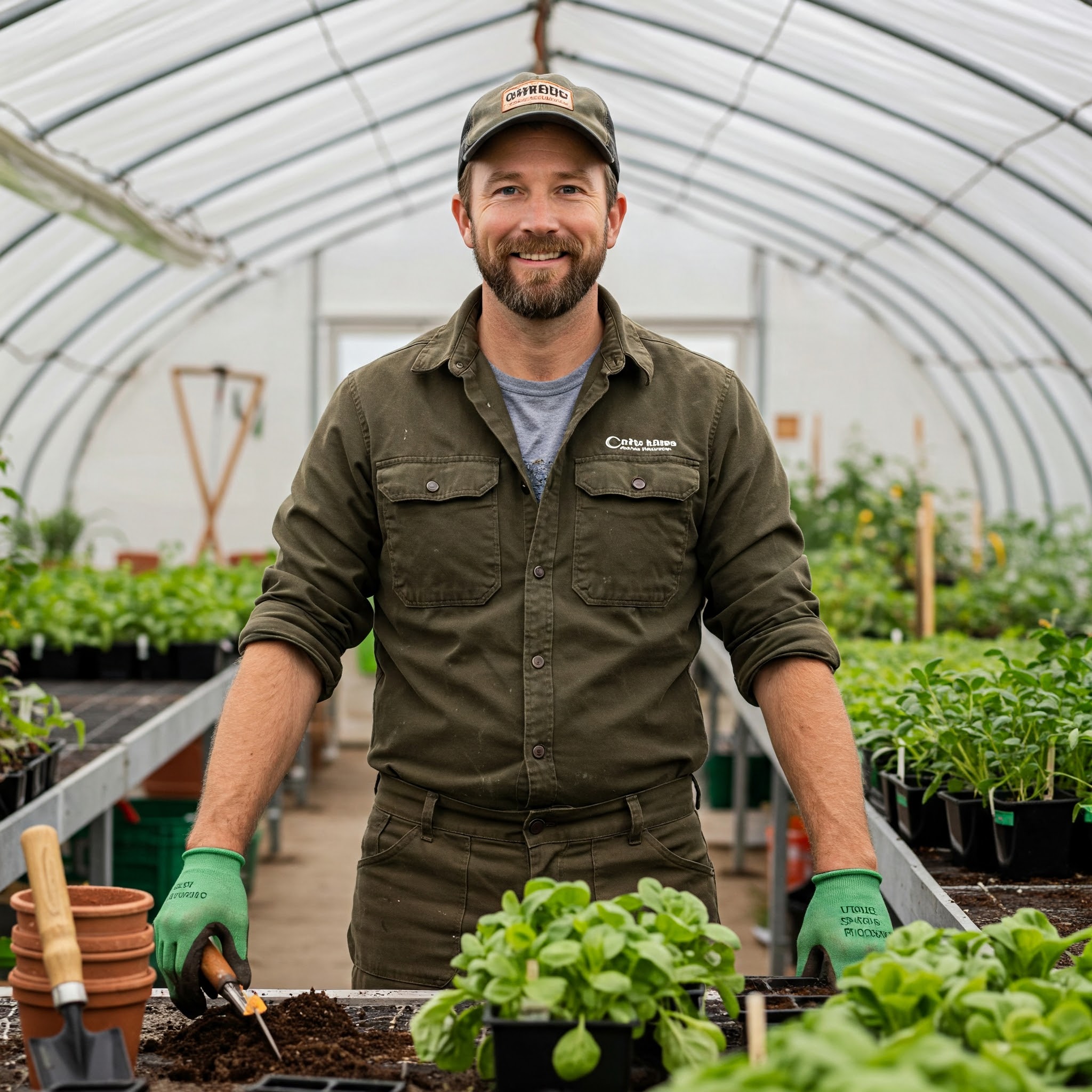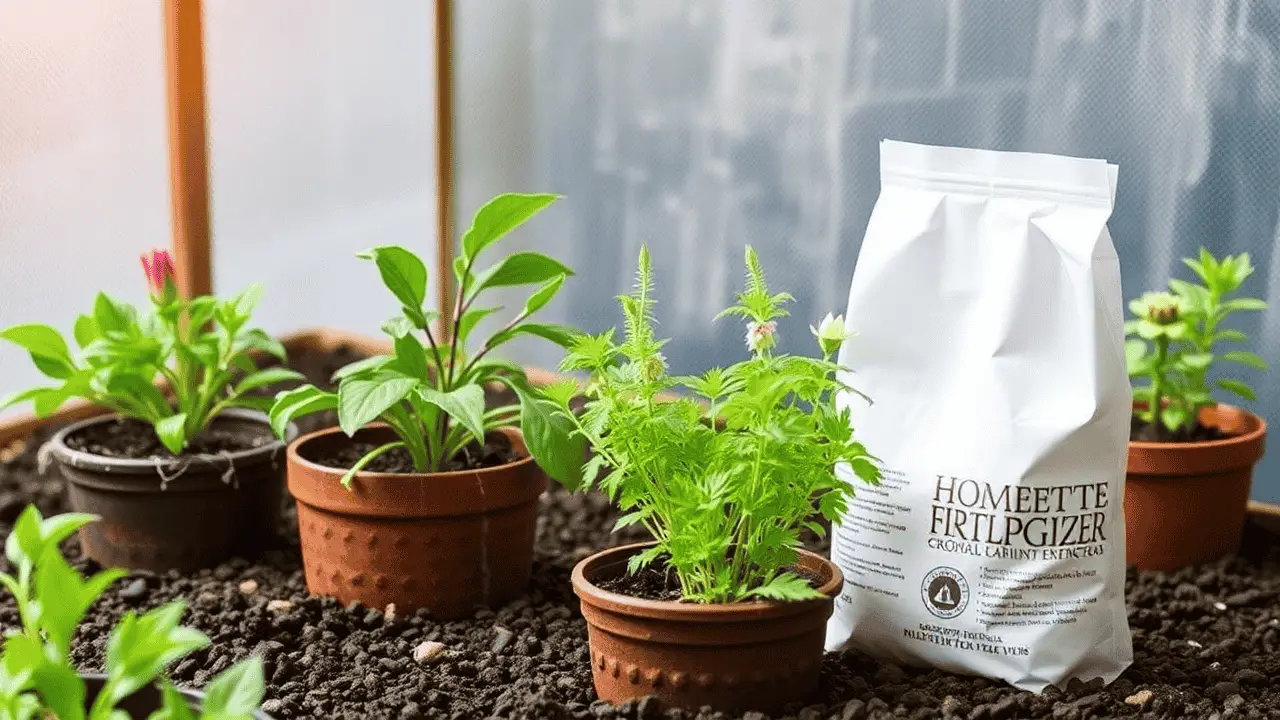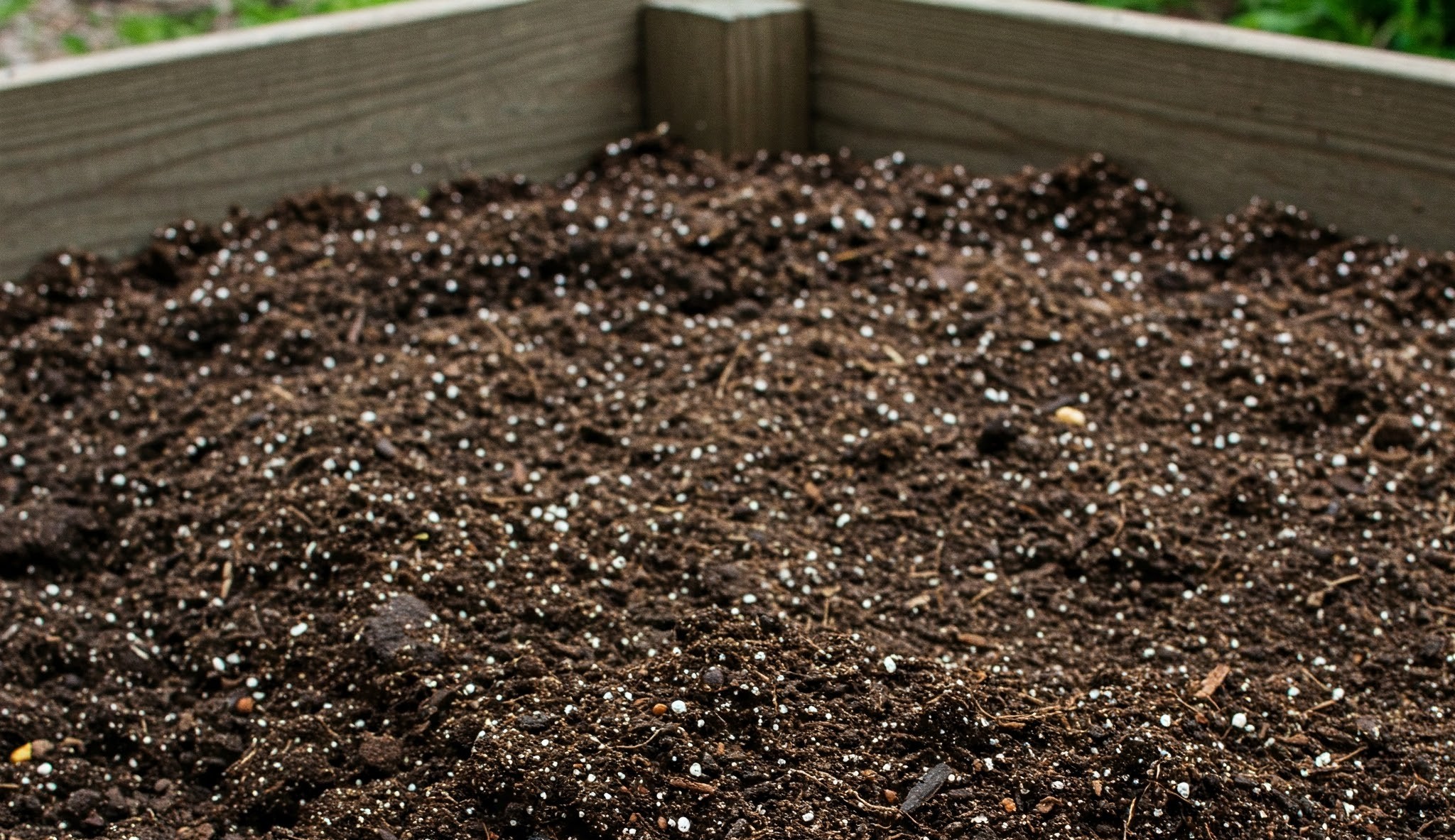How to Start Your First Garden

Starting your first garden is an exciting adventure! It’s a chance to get your hands dirty, learn something new, and grow your food. You might feel a little nervous, but trust me, it’s easier than you think. Even if things don’t go perfectly at first, that’s okay!
Gardening teaches patience, adaptability, and the joy of nurturing life. Every challenge, whether it’s a stubborn seed or a surprise pest, is an opportunity to learn and grow alongside your plants. It’s such a rewarding journey that mirrors nature’s rhythm and resilience. Gardening is an adaptable hobby that fits any space, from compact balconies to sprawling backyards. With a bit of creativity and the right plants, you can design a lush and fulfilling garden no matter the size. It’s all about making the most of what you have and enjoying the process of growth and transformation.
This guide will walk you through the steps to get your first garden started, from choosing the perfect spot and preparing the soil to nurturing your plants and celebrating your successes. You’ll learn how to select the right plants for your climate, how to care for them properly, and how to troubleshoot any challenges that may arise.
Step 1: Planning Your First Garden
Starting a garden begins with a little bit of planning to set yourself up for success. Taking the time to plan thoughtfully will save you effort and frustration down the road. It’s like creating a blueprint for your green oasis! Let’s explore the key things to think about.
Choosing the Ideal Location: Sunlight is Key
Sunlight is essential for plants as it powers the process of photosynthesis—their way of creating food and energy. Plants transform sunlight, water, and carbon dioxide into glucose, which fuels their growth. Those that bear fruits or vegetables thrive best with 6 to 8 hours of direct sunlight daily, ensuring robust development and productive harvests. It’s fascinating how nature orchestrates this energy exchange!
To find the sunny spots in your yard, watch how the sun moves throughout the day. Notice which areas are sunny in the morning, during midday, and in the afternoon. The spots that get sun for most of the day are your best bet. If you only have a spot that gets less sun (partially shady), don’t worry! Plenty of plants, like leafy greens and certain flowers, grow with minimal direct sunlight, allowing you to still enjoy a vibrant and productive garden. Adaptability is key!
Understanding Your Space: Determining Garden Size
When you’re starting your first garden, it’s often best to start small. A smaller garden is easier to take care of, so you can learn the basics without feeling overwhelmed. You could start with a small raised garden bed, or even a few containers on a patio or balcony.
Think about how much space you have available and how much time you realistically have to spend gardening. You can measure your potential garden area with a measuring tape to get an idea of its size. Visualize how you might arrange your plants in that space, keeping in mind how big they will get.
Selecting the Right Plants for Success (Beginner-Friendly Choices)
Choosing the right plants is super important for a successful first garden. You’ll want to pick plants that are well-suited to the climate where you live and the type of soil you have. Beginners often have the most success with plants that are known to be easy to grow.
Here are a few examples of beginner-friendly plants:
Herbs: Basil and mint are excellent beginner-friendly herbs! They’re both hardy and thrive in containers, making them perfect for small spaces or indoor gardening. Basil loves sunny spots, while mint is a bit more adaptable and even tolerates partial shade. These herbs not only grow easily but also add delightful flavors to your meals, making them a rewarding choice for any gardener.
Vegetables: Lettuce and radishes are fantastic choices for beginners! These fast-growing vegetables provide a quick sense of achievement, making gardening an encouraging experience. Lettuce thrives in cool weather and is perfect for multiple harvests, while radishes mature in just a few weeks, offering crisp and flavorful rewards. Both are simple to grow and bring fresh, homegrown produce to your table in no time!
Flowers: Marigolds and zinnias are wonderful flowers for beginners! They are hardy, easy to grow, and bring vibrant bursts of color to any garden. Marigolds are known for their bright orange and yellow hues, as well as their ability to repel certain pests. Zinnias, on the other hand, come in a variety of colors and bloom profusely, making them a cheerful addition. Both flowers thrive with minimal care, making them perfect for creating a lively and low-maintenance garden!
These plants are often chosen by beginners because they can handle a bit of learning on your part and tend to grow relatively easily. To figure out what plants will grow best in your specific area, you can look up your plant hardiness zone online or check with your local agricultural extension office or a reputable gardening website. These resources can provide valuable information about your local growing conditions.
Considering Your Goals
Think about what you hope to get from your first garden. Do you dream of colorful flowers to brighten your space? Would you love to cook with fresh herbs? Or are you excited about growing your vegetables to eat? Knowing your goals will help you narrow down your plant choices and make your first gardening experience even more rewarding.
Step 2: Soil Preparation for Your First Garden
Healthy soil is the secret to happy and thriving plants in your first garden. Think of the soil as the foundation for your green friends – it provides them with the food they need (nutrients), holds the right amount of water so they don’t get too thirsty or drown (water retention and drainage), and gives their roots a place to anchor and grow strong.
Understanding Your Existing Soil: Simple Soil Testing
To give your plants the best start, it’s helpful to know a little bit about the soil you already have. One important thing to understand is soil pH. This is a measure of how acidic or alkaline your soil is. It matters because it affects how well your plants can take up the nutrients they need. Most garden plants thrive in soil that’s slightly acidic to neutral, with a pH of 6.0 to 7.0.
Using a home soil testing kit from a garden store is an easy way to determine your soil’s pH. These kits typically include instructions for sampling and a color chart to assess the results. If you want a more detailed analysis of your soil’s nutrients, you can also consider sending a sample to a professional soil testing lab, but for a first garden, a home kit is often a great start.
Amending Your Soil for Success: Adding Organic Matter
One of the best things you can do for your garden soil is to add organic matter. This is anything that was once living, like compost (broken-down food scraps and yard waste), aged manure, or leaf mold (decomposed leaves).
Organic matter enriches your soil, improving its structure and making it more welcoming for roots. It loosens heavy clay soil, allowing water to drain more freely, and helps sandy soil retain moisture and nutrients. As organic matter breaks down, it releases nutrients that plants need to thrive. To incorporate organic matter, simply spread a layer of compost or other amendment over your garden bed and mix it into the top few inches of soil before planting.
Finally, it’s important to make sure your soil has good drainage. If the soil stays soggy for too long, the roots of your plants can rot and they won’t be able to get the air they need. If heavy clay soil tends to stay soggy, adding organic matter or building raised beds—elevated garden beds that allow excess water to drain—can make a significant difference.
Step 3: Planting Your Chosen Plants
Now comes the exciting part – putting your plants in the ground! To give them the best possible start in your first garden, it’s important to follow a few simple guidelines.
Following Planting Guidelines: Respecting Each Plant’s Needs
Every type of plant has its own specific needs for how deep to plant it, how much space it needs from other plants, and how much sunlight it loves. That’s why it’s so important to read the seed packets or plant tags that come with your seeds or young plants.
These small yet valuable guides provide details like the recommended planting depth—how deep the seed or seedling should be placed in the soil—and spacing, which ensures each plant has enough room to grow without being crowded. They’ll also specify sunlight needs, guiding you to select the ideal spot for planting.
When sowing seeds, create a small hole at the depth indicated, place the seed inside, and gently cover it with soil. For seedlings, plant them at the same depth they were growing in their original container. Give every plant enough space for its roots and leaves to grow freely.
Watering for Establishment: Giving Your Plants a Good Start
Once your seeds or seedlings are planted, it’s essential to water them right away. This helps the soil settle around the roots and provides the moisture they need to begin growing.
For the first few weeks, consistent watering is crucial to help roots establish. Keep the soil evenly moist, like a well-wrung sponge—not soggy. The frequency of watering will depend on your soil and weather, but a simple check is to feel the top inch of soil—if it’s dry, it’s time to water. Aim to water plants early in the morning or late in the evening, which minimizes evaporation and reduces the risk of diseases caused by wet leaves.
The Benefits of Mulch: Protecting Your New Plants
After planting and watering, adding a layer of mulch can provide significant benefits. Mulch is any material spread over the soil’s surface and works wonders for your garden.
- Retains soil moisture: It helps the soil stay hydrated longer, reducing the need for frequent watering.
- Suppresses weeds: By blocking sunlight, it prevents weed seeds from sprouting.
- Regulates soil temperature: It keeps the soil cooler in summer and warmer in winter, creating a stable environment for roots.
Beginner-friendly mulching materials include straw, shredded leaves, and wood chips (avoid dyed ones). Apply a 2- to 3-inch thick layer around your plants, making sure to leave a small gap around stems to prevent rot.
Step 4: Caring for Your First Garden
Once your plants are settled in your first garden, consistent care will ensure they grow strong and produce their best. Here are some essential tips to keep in mind:
- Watering:
Keep the soil moist but not soggy. Check the top inch of soil—if it’s dry, it’s time to water. Water deeply and aim to do so in the morning or evening to minimize evaporation and avoid wet leaves overnight. - Weeding:
Remove weeds regularly so they don’t steal water, sunlight, or nutrients from your plants. Pull them out completely, roots and all, especially when the soil is moist. - Feeding:
Add nutrients to your garden by using compost or a balanced organic fertilizer. Follow the instructions carefully to avoid over-fertilizing. - Pest Care:
Check your plants for signs of pests. Handpick larger bugs and use natural solutions, like soapy water or neem oil, for small pests. Attract helpful insects like ladybugs to keep pests in check. - Mulching:
Spread mulch around your plants to keep the soil moist, regulate temperature, and reduce weeds. Leave a small gap around plant stems to prevent rot. - Observation:
Pay attention to your plants daily. Look for changes in leaves, stems, or growth. Catching issues early helps you fix problems quickly. - Patience:
Gardening takes time, so enjoy watching each stage of growth. Celebrate the progress your plants make, no matter how small.
Tips for a Successful First Garden
Remember, gardening is a learning process, and it takes time for your plants to grow and for you to get the hang of things. Don’t be discouraged if you don’t see perfect results right away. Pay close attention to your plants – careful observation is one of the best ways to learn what they need. Notice how their leaves look, how the soil feels, and if you see any changes.
Don’t hesitate to seek out local resources for help and advice. Garden centers often have friendly, knowledgeable staff who can offer advice and recommend plants or products suited to your area. Chatting with experienced neighbors who garden can also provide valuable tips specific to your local climate. Additionally, joining online gardening communities is a great way to share experiences, ask questions, and connect with both beginners and seasoned gardeners.
It can also be really helpful to keep a simple garden journal. You can note down when you planted different things, your watering schedule, what the weather has been like, and any observations you make about your plants’ growth and health. This record can be a valuable resource as you learn what works best in your garden.
Most importantly, encourage yourselves to appreciate every stage of growth, from the first tiny sprout pushing through the soil to the development of leaves, flowers, and eventually, fruits or vegetables. There’s a special kind of satisfaction in watching something you planted grow.
Finally, remember that gardening can be incredibly therapeutic and productive. Spending time outdoors, connecting with nature, and nurturing living things can be a wonderful way to relax and de-stress. Enjoy the journey and the connection you’re building with your first garden!
Frequently Asked Questions About Starting Your First Garden
Q. Is starting a garden hard?
Not really! It takes a little effort to get started, but if you follow some simple steps, it can be easier and more fun than you think.
Q. How much sunlight does my garden need?
Most vegetables and flowers need at least 6 to 8 hours of direct sunlight every day. Watch your yard to see where the sun shines the longest.
Q. What if my yard is mostly shady?
That’s okay! Many plants like lettuce, spinach, and hostas do well with less sun.
Q. Do I need a big yard to start a garden?
No! You can grow plants in pots on a balcony, in a small raised bed, or even on a sunny windowsill.
Q. What kind of soil should I use?
Use soil that drains well. You can make it better by adding compost.
Q. How often should I water my new plants?
Water them when the top inch of soil feels dry. Young plants usually need more water until their roots are strong.
Q. What are some easy plants for beginners?
Try herbs like basil and mint, vegetables like lettuce and radishes, or flowers like marigolds and zinnias.
Q. Do I need to use fertilizer?
Your plants will appreciate it! Starting with a balanced organic fertilizer or adding compost to your soil is a good way to give them the nutrients they need.
Q. How do I keep weeds out of my garden?
Pull them out regularly, especially when they’re small. Adding mulch can also keep weeds away.
Q. What if bugs start eating my plants?
Keep an eye on your plants. For small problems, you can often pick off the bugs by hand. Natural sprays like soapy water or neem oil can also help.
Q. How soon will I see results from my garden?
Some plants, like radishes, grow fast. Others, like tomatoes, take longer. Enjoy the process!
Q. What if I make mistakes?
That’s normal! Gardening is a learning adventure. Don’t be afraid to try things and learn from any mistakes you make.
Q. Where can I get more help with my garden?
Check out your local garden centers, talk to experienced gardening neighbors, or look for reliable gardening websites and resources online. Your local agricultural extension office is also a great source of information.
Conclusion: The Start of a Lifelong Passion
Take heart, new gardeners! Starting your first garden is absolutely within your reach. With a little effort and a sprinkle of patience, you can experience the magic of bringing plants to life.
Remember that this is just the beginning of what can become a lifelong passion. There’s always something new to learn and explore in the world of gardening.
There’s nothing quite like the pride and happiness that comes from cultivating your little patch of nature. Enjoy the process, celebrate the progress, and cherish every moment spent creating your green haven. Happy gardening!
Amazon Affiliate Product Recommendations:
- Soil Testing Kit – View on Amazon
- Organic Compost – View on Amazon
- Garden Mulch – View on Amazon
- Balanced Fertilizer – View on Amazon
- Neem Oil – View on Amazon

I’m John Doe, a Certified Master Gardener with over 20 years of hands-on experience in cultivating healthy and vibrant gardens. My expertise spans organic gardening, soil science, and sustainable pest control. I’ve worked extensively with community gardens and have a deep passion for sharing my knowledge to help others succeed in their gardening endeavors.







